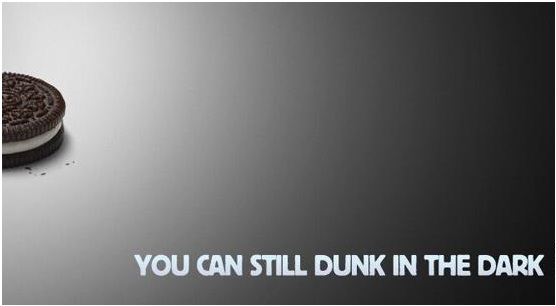7 Steps to Becoming a World-Class Real-Time Marketer

How to Do Real-Time Marketing Like A Boss
1) Determine Relevant Streams
Before you can even consider implementing real-time marketing, you have to identify where conversations relevant to your brand are taking place. Does most of your audience use Twitter? Are they information junkies who can't live without Quora? Do they focus more on the visual aspects of a particular subject and, therefore, are more likely to be active on Pinterest or Instagram? Are they news junkies who dive deep into topics on Digg, Reddit, or StumbleUpon? Maybe they're social butterflies who roll over in the morning and fire up Facebook even before wiping the sleepers out of their eyes.
Understand the mindset of your audience. Understand their social media habits, tendencies, and proclivities. Know which social media neighborhoods they frequent. Quietly become a "neighbor," and observe. Who cuts their grass first thing in the morning? Who takes out their trash in the middle of the night? To help you determine which social network your audience populates, check out this post about 8 questions to determine if a social network is worth your time.
2) Organize the Stream
You can't understand or paint a clear picture of a conversation unless you have all the pieces in one place. From a nuts and bolts perspective, this might mean using a social media monitoring or engagement tool like HubSpot or HootSuite (which integrate with each other, by the way). From a more strategic standpoint, that means having all decision-makers in the same room or, at least, connected in a way that allows you to make quick, agile decisions based on the flow of the conversation. This is exactly what made the Oreo Dunk in the Dark ad possible. The agency and marketing team decision-makers were all in one room, allowing for the immediate conceptualization, approval, and publishing of the ad.
3) Understand the "Stream"
Once you've identified your audience's neighborhood, you have to familiarize yourself with "the stream." And by stream, I mean the flow of content related to a particular area of interest for your brand. This can be as broad as the aforementioned Super Bowl or Oscars, or it can be a much smaller content stream that focuses on an event or particular focus for your brand such as the stream of content surrounding an industry trade show or relevant television show.
Either way, familiarize yourself with the tenor and tone of the conversation. Identify the participants. If the event is scheduled, take a look at past content streams surrounding a prior iteration of the event or topic. In a nutshell, it's like entering a conversation at a cocktail party. You don't simply walk over to the group and blurt out the first thing that comes to mind without politely listening to the conversation first. Listen. Learn. Gain context.
4) Determine Influence and Relevance
While it's critical to determining when, where, and with whom the conversation takes place, the relative importance of the conversation should be of greater interest to you as a marketer. Is it relevant to your brand? Just how "big" is the conversation? Is it idle chatter, or is there a nugget of importance you can latch onto? Does the conversation allow for the placement of contextual content your audience would deem useful, informative, or pointedly amusing?
Again, much like the cocktail party scenario, be sure to identify sentiment. Bathroom humor might go over quite well within a trucker convention conversation -- but not so well in a conversation surrounding the choice of a new pope.
5) Set up Alerts
Once the various streams of conversation have been identified, once the tenor and tone of the conversation have been established, and once the relevance of the conversation has been determined, members of your real-time marketing team and essential decision-makers need to be notified. There are some companies who choose to automate this process, but you can just as easily pass information on to the team via email, text, or chat.
The most important takeaway is that these alerts must happen in real time so your real-time marketing can be implemented expediently. Oreo, for instance, had a "war room" set up during the Super Bowl to monitor conversation, determine its relevance, and react quickly. Had the brand published the Dunk in the Dark ad the next day, it would not have had anywhere near the punch it did during the game.
For popular, annual events such as the Super Bowl or the Oscars, "war room" scenarios make sense. For smaller, more niche events, they may not be necessary. Just make sure every decision-maker necessary is always in the know.
6) Frame the Conversation
Whether you're managing a real-time marketing campaign for your own brand or for another, the conversation must be summarized and framed in a manner that is easily understood by your team, your client, or for that matter, yourself. Framing the conversation brings clarity and helps identify whether or not the conversation is one that lends itself to brand engagement.
Even with an Oreo-like team all in the same room during a large event such as the Super Bowl, concisely summarizing the conversation, its relevance, and the potential opportunity for the brand is a necessary step.
7) Engage
Just as Captain Picard said in many an episode of Star Trek, once everything is properly aligned, once all team members have been properly briefed, and once a direction has been determined, it's time to engage. It's time to pull the trigger. It's time to act on all of the information you have acquired and for you to implement some informative, insightful, or perhaps even witty real-time marketing.
If you've determined the relevant streams, pulled them together into a single dashboard, identified relevant conversations, informed everyone on the team, and framed the conversation in context of the brand, you're ready to act. As Nike would say, "Just Do It." Of course, if you follow these seven steps, whatever you do decide to do will have a much higher degree of success than if you just shot from the hip.






















